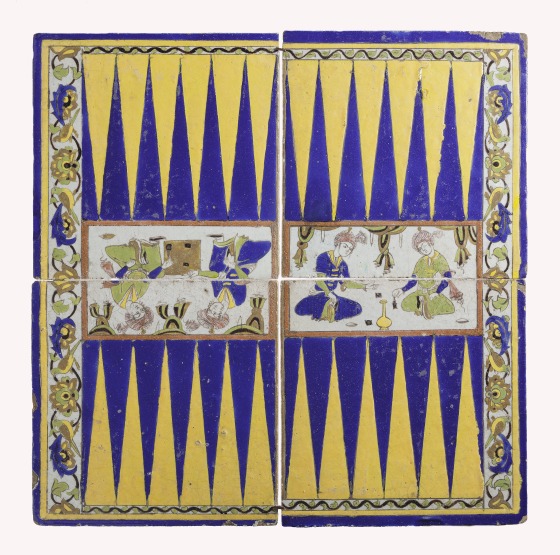Four Tiles Forming a Backgammon Board
Please log in to add this item to your gallery.
View comments
No comments have been posted yet.
Add a comment
Please log in to add comments.
Please log in to add tags.
* Nearly 20,000 images of artworks the museum believes to be in the public domain are available to download on this site.
Other images may be protected by copyright and other intellectual property rights.
By using any of these images you agree to LACMA's Terms of Use.
Four Tiles Forming a Backgammon Board
Iran, Isfahan, 17th century
Ceramics
Fritware, cuerda seca technique
a-d) 9 x 9 x 3/4 in. (22.86 x 22.86 x 1.91 cm) each
Purchased with funds provided by Camilla Chandler Frost (M.2012.22a-d)
Not currently on public view
